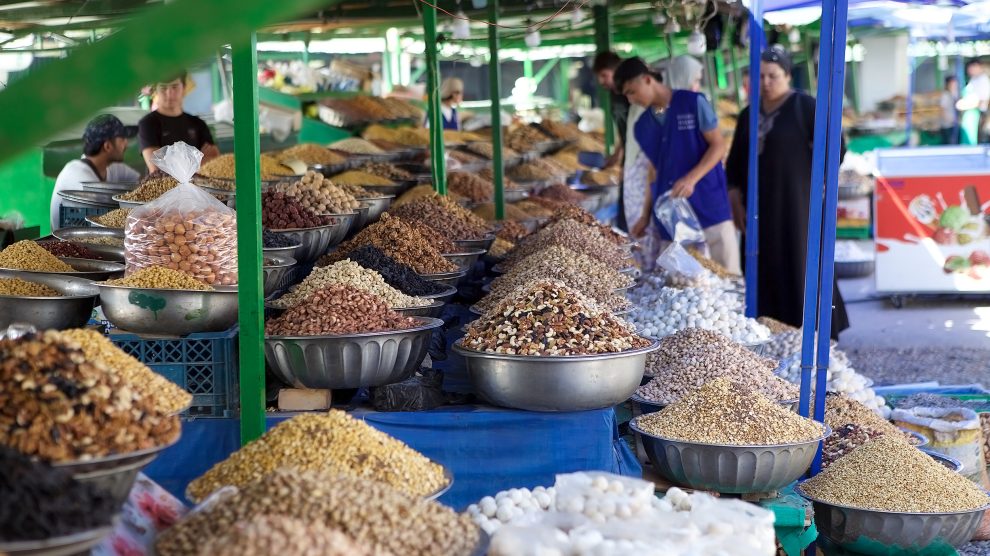While remittances, hydropower schemes, and fields have long defined Tajikistan’s economy, the writing on the wall is clear—reinvention is needed. Bold investments in technology and innovation could provide a promising alternative to traditional revenue streams.
Landlocked and mountainous, Tajikistan’s economy is as rugged as its topography. Freed from Soviet central planning well over three decades ago, the country’s present path is shaped by labour remittances, ambitious hydroelectric schemes, and an agrarian sector that stubbornly resists modernisation.
The result is a curio that is part legacy, part aspiration, and part geopolitical jigsaw.
The remittance engine
No single force drives Tajikistan’s economy more than the remittances of its migrant workforce. More than one-third of GDP stems from the earnings of Tajiks employed abroad, chiefly in Russia.
These flows (5.7 billion US dollars, equal to 38.4 per cent of GDP in 2023, according to the World Bank) prop up consumption, indirectly fuel domestic investment, and have led to a fall in the percentage of those living below the poverty line (the minimum subsistence threshold), from 32 per cent in 2009 to 12.4 per cent in 2022.
But such dependence—globally, only in Tonga do remittances account for a higher proportion of GDP—comes at a cost. Changes in Russian labour policy or economic crises such as Covid-19 (when remittances fell sharply) can periodically choke off this critical income.
Officials in Dushanbe are keenly aware of this fragility, yet progress on building alternative revenue streams is sluggish, despite healthy headline GDP growth (8.4 per cent in 2024). Growth is expected to moderate slightly in 2025, to 7.4 per cent, according to the Asian Development Bank.
Taming the rivers
What Tajikistan lacks in hydrocarbons, it makes up for in altitude and fast-moving rivers. Its mountainous geography makes it a natural candidate for hydropower, and the centrepiece of this strategy is the Rogun dam, a major new source of electricity that is being built on the country’s Vakhsh River.
Still under construction, it promises to meet national energy needs and generate export earnings—as much as 70 per cent of the energy generated is expected to be exported to Kazakhstan and Uzbekistan.
But such megaprojects are rarely simple. Rogun has already sparked tensions with downstream neighbours concerned about water access. Environmental consequences loom large, and international negotiations will be critical to ensuring the project brings light without heat.
Sowing change in the fields
Although 93 per cent of Tajikistan’s land is mountainous, even with such rugged landscapes, the agricultural sector plays a critical role in the country’s economy—more out of necessity than efficiency.
Cotton remains king. In fact, cotton supports more than half of the rural population in Tajikistan.
Yet the sector suffers from ageing infrastructure, fragmented landholdings, and climate risks ranging from erratic weather to melting glaciers. Water scarcity is a major concern for farmers and their communities as temperatures regularly exceed 30 degrees Celsius in the summer. More than 90 per cent of agricultural land is irrigated rather than rain-fed.
Modernisation efforts are under way—the country was the first in Central Asia to join the Better Cotton Initiative, a global NGO helping cotton communities survive and thrive, while protecting and restoring the environment—but results have been tepid.
Government initiatives to encourage crop diversification and mechanisation signal intent, though implementation remains glacial.
The reform conundrum
Reform is in vogue in Dushanbe. Policymakers have made the right noises about streamlining bureaucracy, curbing graft, and coaxing private enterprise out of the shadows, but the results have so far been modest, suggesting simulated rather than real change.
Systemic challenges endure. Informal networks and the residue of centralised planning still shape commercial life. Reforms, critics argue, will need to be deeper and more comprehensive if the government hopes to wean the economy off remittances and cotton.
The country remains a de facto dictatorship, led by Emomali Rahmon. In office since 1994, Rahmon is Central Asia’s longest serving president. Reports earlier this year suggested that Rahmon, now in his early 70s, is grooming his eldest son, Rustam Emomali, to succeed him as Tajikistan’s paramount leader.
According to Human Rights Watch, the Tajik government last year reinforced its crackdown on dissent, jailing public figures, journalists, and bloggers. It also sought the deportation or extradition from other countries of people linked to a banned opposition party.
Courting capital, avoiding captivity
Nevertheless, there is some foreign investment, much of it from China, the country’s largest investor. Roads, power stations, and other infrastructure projects have proliferated. But this influx brings baggage.
In July 2024, Xi Jinping arrived for a state visit to Dushanbe and was received with much fanfare. During a speech to the media, he stated it is “important to deepen security cooperation and create a security barrier for the development of the two countries.”
In turn, President Rahmon vowed, “to ensure through joint efforts the sustainable development of the region and collectively counteract the challenges and threats that are common to all of us.”
While Russia remains the dominant provider arms, Tajikistan and China regularly hold joint exercises involving the military and internal security forces. China’s assistance, according to the Carnegie Endowment for International Peace, a US think tank, “is particularly helpful to the regime as it seeks to stamp out opposition.”
This growing indebtedness to Beijing has stirred concerns over sovereignty, while Moscow’s grip on the Tajik labour market remains firm. Walking the tightrope between two geopolitical giants requires diplomatic dexterity. Tajikistan must attract capital without mortgaging its future.
The signing of a border agreement with neighbouring Kyrgyzstan in March, demarcating their shared frontier, finally ending a long-running border conflict that has seen dozens killed in skirmishes in recent years, should settle the nerves of some potential investors.
Hope in the start-up sector
In the capital and a handful of urban hubs, a modest crop of start-ups in tech, finance, and e-commerce is emerging, helped along by better internet access and a digitally literate youth.
Over the past couple of months, zypl.ai, a no-code AI platform that enables banks to independently develop AI models without relying on external developers, has raised several million US dollars in funding from international investors, including Prosus Ventures, part of Prosus and Naspers, one of the world’s largest tech investors.
Fintech Alif meanwhile, which offers an ecosystem of in-house developed financial and technological solutions, now employs more than 1,400 people across Tajikistan, Uzbekistan and Pakistan.
In October 2024, Dushanbe hosted its first major start-up event, Startupstan, which brought together key players in the venture capital and start-up ecosystem across the Central Asia region, including 60 leaders of local and regional startups, venture capital funds, technical experts, special guests, and government authorities.
Earlier this month, Tajikistan’s inaugural IT Park opened in Dushanbe, with a mission is to promote the development of information technologies and support the growth of digital entrepreneurship.
While these ventures and initiatives remain marginal to the overall economy, they hint at a future less tethered to tradition.
Should reforms in education and infrastructure keep pace, these fledgling industries may become tomorrow’s engines of Tajikistan’s further growth.
Photo: Dreamstime.


Add Comment